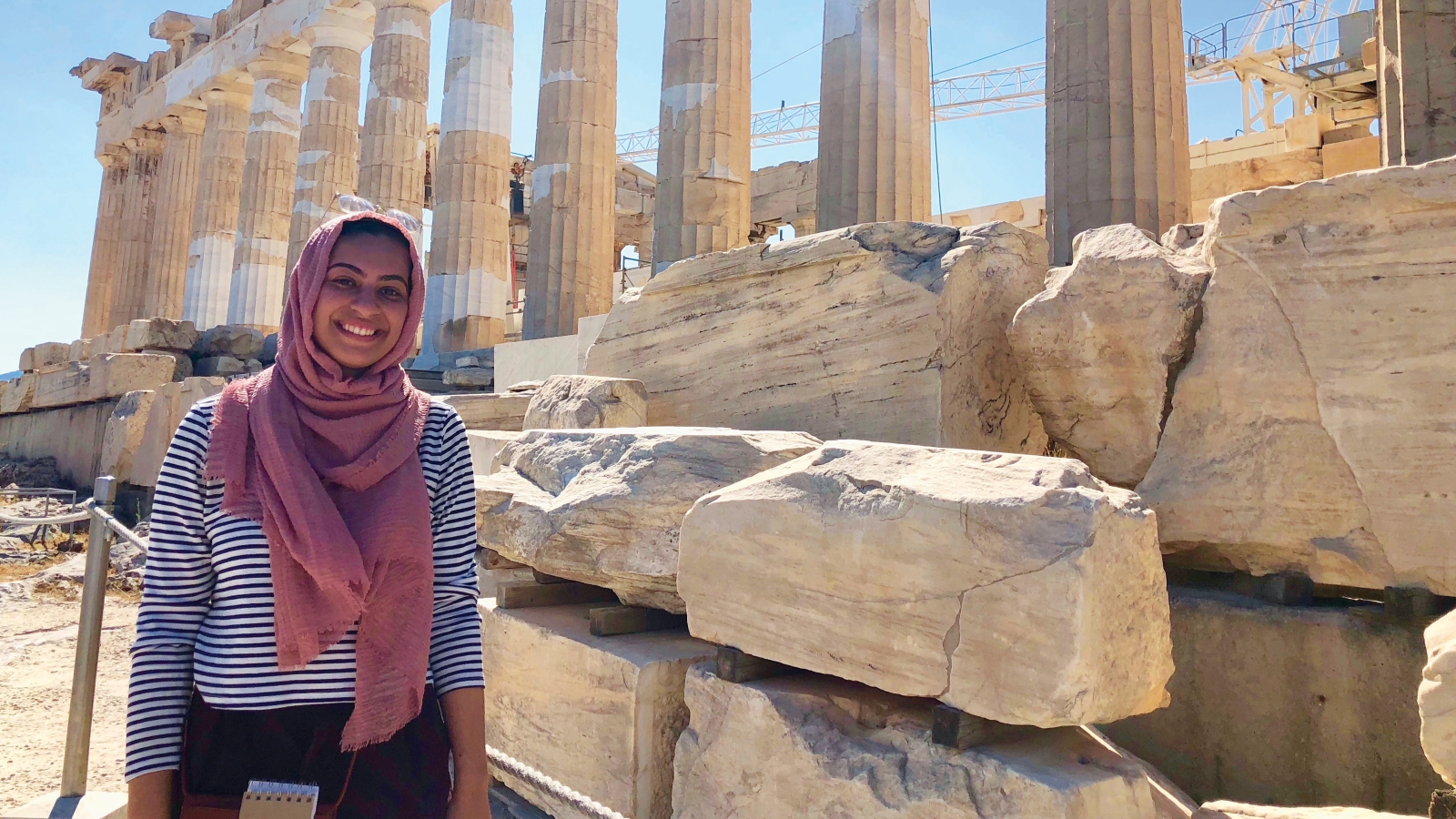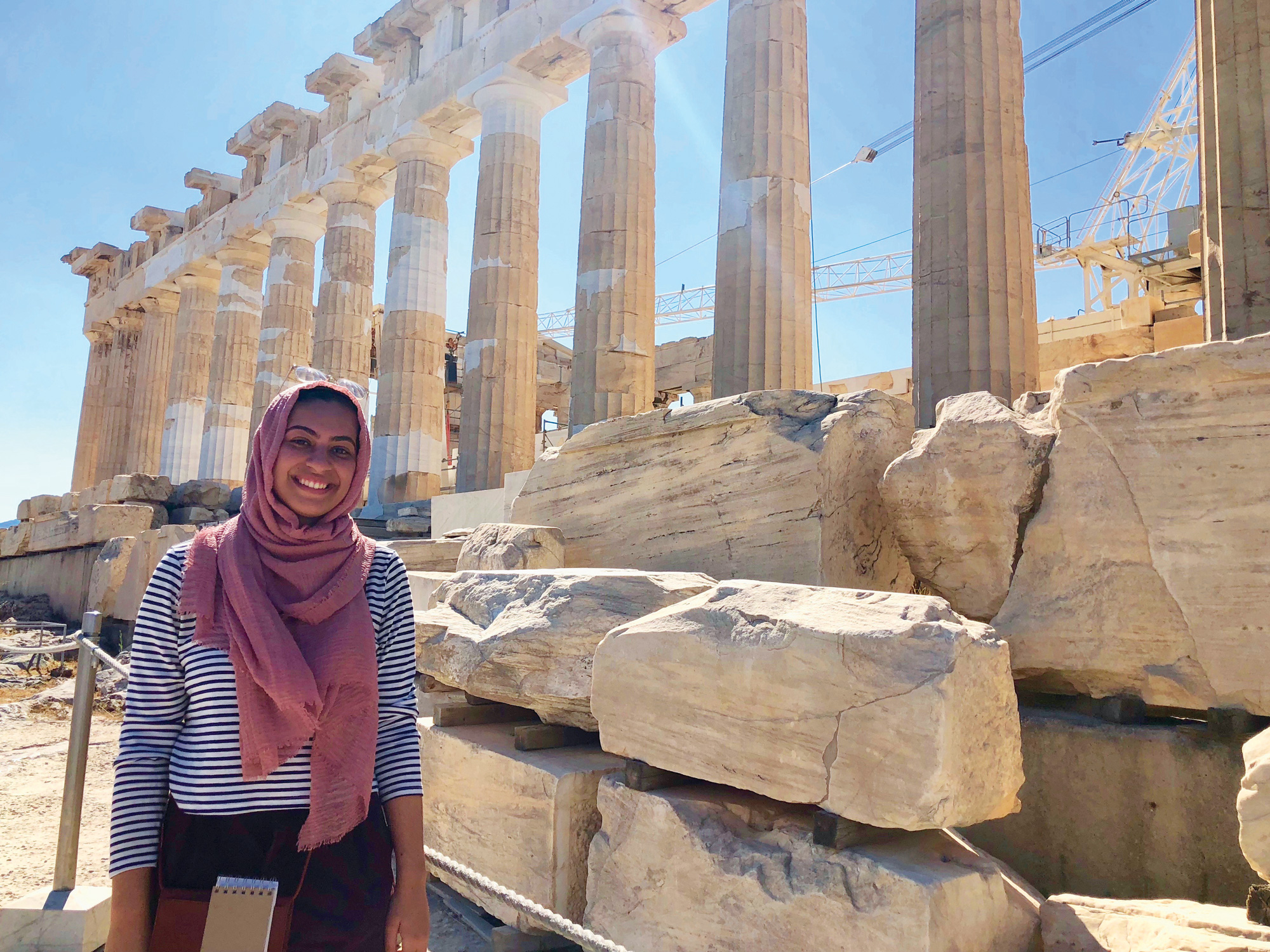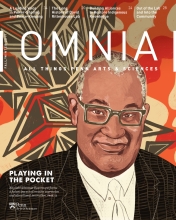Studying Ancient Architectural Artifacts in Greece
Zahra Elhanbaly, C’21, explores the mystery of large artifacts found at the bottom of the Aegean Sea.


On her first visit to Greece, and her first time traveling alone, Zahra Elhanbaly, C’21, visited the Acropolis in Athens.
Courtesy of Zahra Elhanbaly
A summer internship took Zahra Elhanbaly, C’21, to the Greek island of Paros for two weeks, where she was tasked with creating detailed architectural drawings for her professor’s research into massive marble artifacts.
Prior to the internship, Elhanbaly, an architecture major and art history minor, took a course with Mantha Zarmakoupi, Morris Russell and Josephine Chidsey Williams Assistant Professor in Roman Architecture, last year. “I’ve always been interested in conservation and architectural restoration, preserving older buildings, and reconstructing them,” Elhanbaly says.
In Greece, the two worked together in a storeroom that holds hundreds of objects, including carved marble capitals dating to the 5th century BCE, excavated from a Paros harbor. At about 2 meters square, they are on the scale of those topping columns at the Parthenon, and date to the same period—but their history is unknown.
“Part of the experience was talking to professors about their theories on this piece. Was it a monument that was destroyed, or planned and never built? Or had they made a piece and decided not to use it?” Elhanbaly says. “We were looking really closely at all the markings asking, ‘What could have happened?’”
Her drawings document each mark, all clues to the capitals’ past and purpose. Original tool carvings, damage from recent moving, corrosion from seawater, fossilized shells—she chronicled it all in hand-drawn sketches, sophisticated architectural elevations, and a series of photographs.
The pair will work on the project throughout the school year to prepare for Zarmakoupi to return to Paros next summer. She is also putting together a volume of essays that will include Elhanbaly’s work.
In the spring, Elhanbaly will spend a semester abroad in London at an architecture school. “Seeing architecture around the world, seeing other parts of the world, is an inspiration,” she says. “I want to think about how I might use this in the future.”



